WHY GO: There are many cool things to do in Hyde Park NY and nearby Poughkeepsie, on the Hudson River in Dutchess County – home to our 32nd President, Franklin D Roosevelt.
But a visit here would not be complete without a tour of and meal at the Culinary Institute of America, our nation’s premier culinary educational institution.
Spend at least half a day at the FDR National Historic Site (even if you’ve been there before). Follow up with a traipse through showcase Gilded Age homes reminiscent of Downton Abby. And then a stroll OVER the Hudson River.
This is that singular getaway that combines the best of culinary, historical and scenic experiences – all in the Hudson River Valley, within a short drive of New York City.
Curious about more trips to take in NY with your person? Check out this Mavens Romantic Getaways in New York State post.
Things to Do in Hyde Park NY
TOUR: Franklin D Roosevelt National Historic Site
Plan to spend the good part of a day at the FDR National Historic Site, which includes the FDR Library, Museum, and his home.
Just FYI – while the Home is managed by the National Parks Service, the Library and Museum – on the same property – is run by the National Archives. You must buy tickets for each.
Franklin Delano Roosevelt was the only United States President elected to four consecutive terms. He died in office during his fourth term, after steering our country out of the Great Depression and through a World War.
FDR’s first campaign song was “Happy Days Are Here Again.” He offered hope to a Depression-weary populace. Proclaiming, “We have nothing to fear but fear itself,” during his first inaugural speech. Written in Hyde Park in 1933, President Franklin D. Roosevelt pledged a “New Deal for the American People.”
The Roosevelt Administration instituted Social Security, Welfare, and Unemployment benefits. He oversaw the creation of ten million new jobs.
Workers planted trees to mitigate farm dustbowls, added a million miles of highway, and created the very first Presidential Library.
And despite the fact that he had polio, FDR exuded a “champagne ebullience.” He never once admitted to the public that he couldn’t walk.
Tours begin in the Visitor’s Center with a 20-minute video.
FDR Home
FDR was born in 1882 into a wealthy railroad family in this ancestral home. A guided tour provides an intimate look at the man who refused to let his useless legs define him. Incredibly, you can see the bed on which his mother, Sarah, gave birth to her only child.
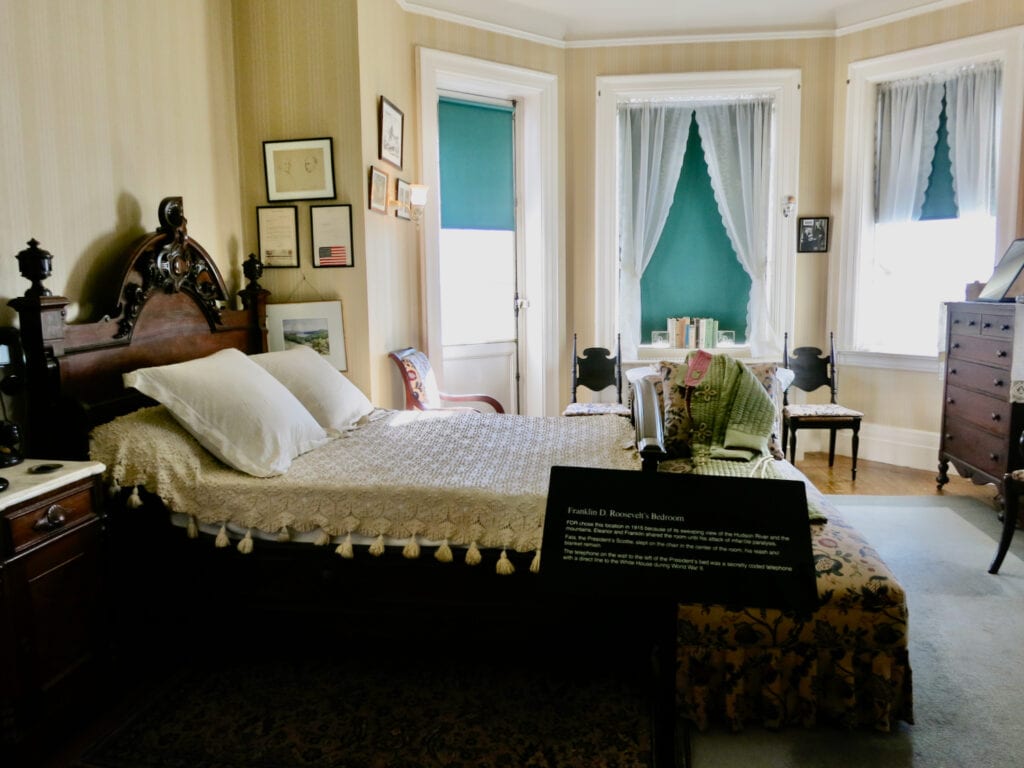
Roosevelt “walked” by gripping the stiff arm of his son and swinging his brace-heavy legs out in a circular motion. He also used a hidden dumbwaiter to move between floors, thus creating the illusion that he was able to climb stairs.
The President carved out a small office for himself in the servant’s quarters in the basement (“who would look for me here?”). There, he first learned about the secret development of a potentially game-changing weapon – the Atomic Bomb.
While on his groundbreaking US Tour in June 1939, King George VI of England and his wife stayed at the FDR home in Hyde Park. It was the first time a reigning monarch had ever set foot on American soil. The whole country seemed as Royal crazy then as we are now.
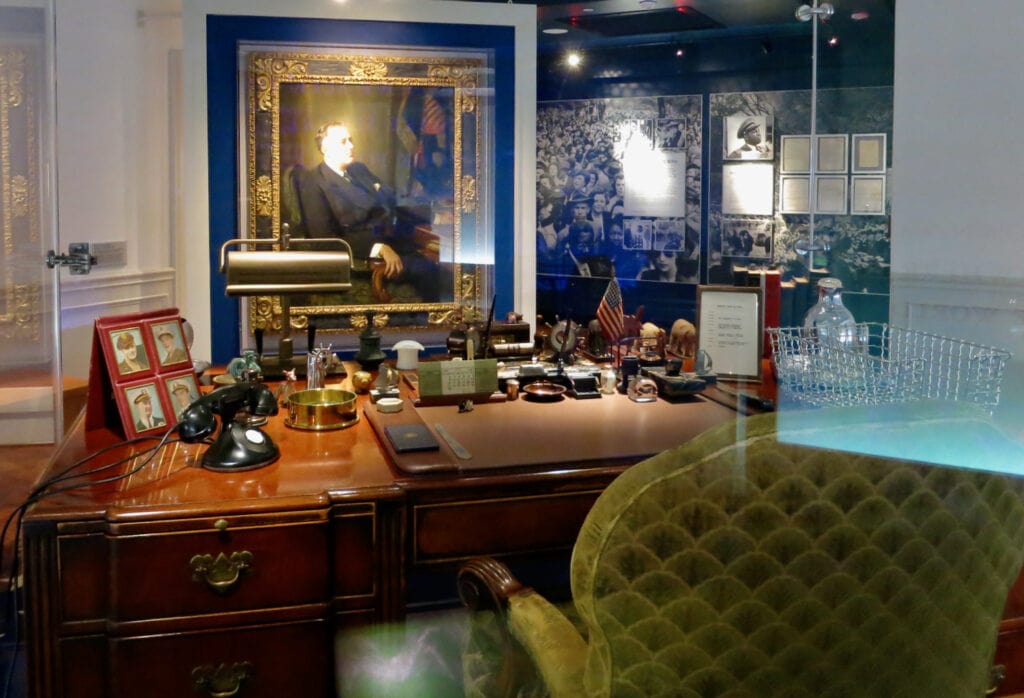
FDR Library and Museum
Reopened in 2013 after a three-year, $35 million renovation, the interactive, multi-media, FDR Library and Museum ropes you in and keeps you intrigued.
It begins with a study of the Great Depression. At 25% unemployment, the economy shrunk in half. Without the safety net of unemployment insurance, breadlines soon spread across the land.
FDR’s First 100 Days
FDR, though, had a vision. Crippled by polio, he nonetheless was elected President in November 1932 at 50 years old. His first 100 days were action-packed. Though some initiatives failed, FDR created jobs through the Works Progress Association (WPA), and instituted Social Security – an entitlement program that was not universally accepted.
Critics believed that FDR and Eleanor were “radicals, leading the nation to socialism and dictatorship.” The left considered him much too moderate.
But his “radical” ideas worked. By the late 1930’s, unemployment had dropped beneath 10% for the first time since 1930.
The 1940 election, FDR’s third, revolved around U.S. involvement in the war abroad. Should the US remain neutral? December 7, 1941 Pearl Harbor answered that question.
FDR proclaimed the day “A date which will live in infamy,” stirring our troops to fight with our allies in Europe.
FDR won his fourth term by the narrowest margin and died a year and a half later on April 12, 1945 at the age of 63. This left President Harry S. Truman to determine whether or not to deploy two atom bombs in Japan in order to end the war
After her husband’s death, Eleanor Roosevelt continued to work on behalf of Civil and Humanitarian organizations for nearly two decades. Her efforts are depicted in a marvelous exhibit that includes the suitcase she took to Tennessee on a Civil Rights trip, despite being threatened by the KKK.
Exhibits conclude with a video written and narrated by President Bill Clinton who called FDR “kind, comforting, and reassuringly positive. He steered America through the roughest seas.”
TOUR: Val-Kill – Eleanor Roosevelt National Historic Site
Named after the Dutch word for Country Stream, Val-Kill was the only home Eleanor Roosevelt ever owned. With 5 children, she was a devoted wife and mother until she discovered her husband’s infidelities in 1938.
Agreeing to stay married, Eleanor remained FDR’s confidant and “conscience.” But she asserted her independence by building her own home on the site of Val-Kill Industries (a real “Cottage Industry”). The collective had been established in 1926 by potters, woodworkers, weavers and pewter workers a few miles from the Roosevelt home.
When FDR died in 1945, Eleanor moved in permanently and lived at Val-Kill until her death in 1962. Kings, Queens and diplomats would arrive at the modest screen door asking “are we in the right place?”
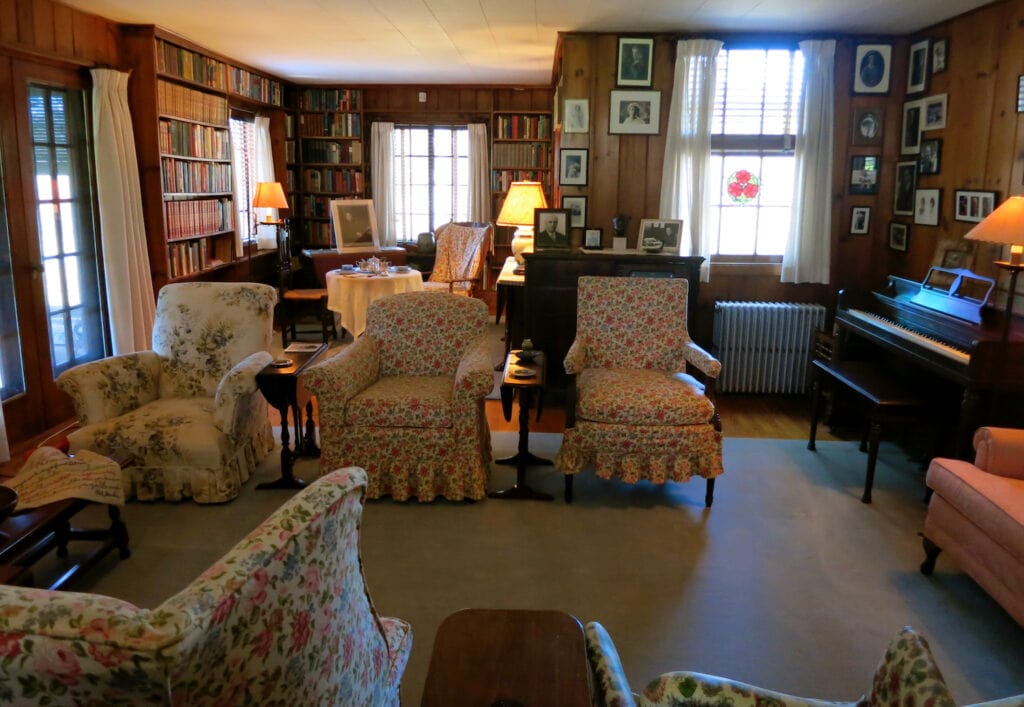
With a pool a few feet from the door, the Roosevelt’s 28 grandchildren rushed in and out while Eleanor conversed with dignitaries “without blinking an eye,” according to Val Kill guide extraordinaire, Doris Mack, who knew Eleanor and her children personally.
Christmas cards from the White House – still in their original Five and Dime frames – line one wall in a small dining room. A modest dining table is set with dime store glassware.
“See that small table in the back of the parlor, set up for tea? That’s where Eleanor sat with young John F. Kennedy who came because he wanted her to back him for President. Despite her reservations about his age and experience, he convinced her,” said Mack.
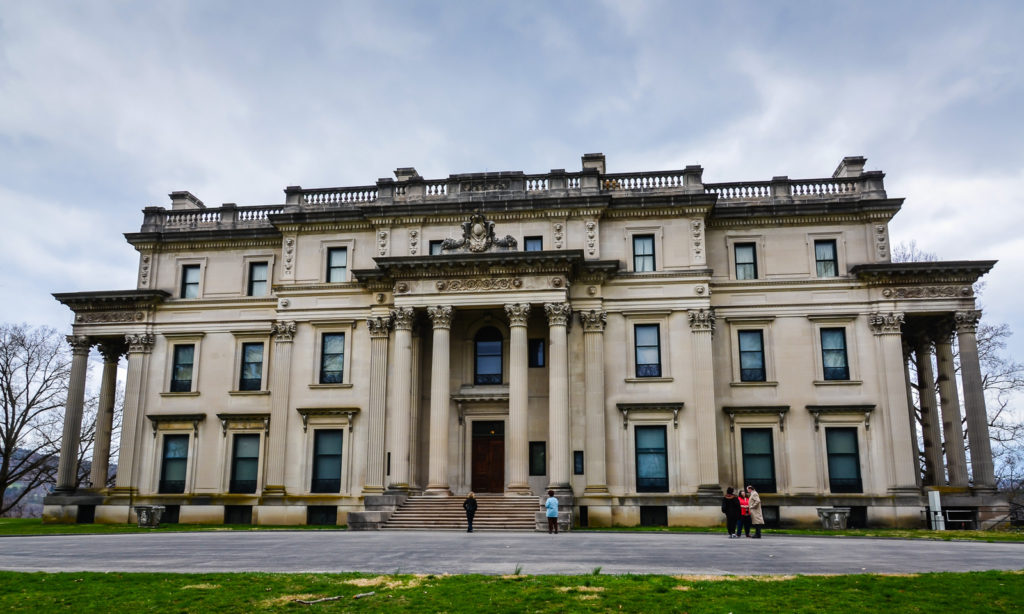
VISIT: Vanderbilt Mansion National Historic Site
The smallest of all 40 Vanderbilt Mansions countrywide at only 50,000 sq. feet, this autumn “Country Cottage,” now the Vanderbilt Mansion NHS, belonged to Frederick.
Fred was but one of eight Vanderbilt grandchildren who conspicuously spent their Grandpa Cornelius’s fortune. (The oldest brother, Cornelius II, built the Breakers in Newport, and the youngest brother, George, lived in the 244 room 8,000 acre Biltmore in Asheville, NC).
Now, the circa 1896 McKim, Mead and White designed Beaux Arts mansion, containing all original furniture, stands as a “Monument to the Gilded Age.”
Walk into a unique circular foyer, no staircase in site. With marble columns, skylight, bedrooms fit for kings and queens, it was built not as a home but showplace used from Labor Day until mid-November only.
The dining table is “just shy of 27 feel long.” Dinner – the event of each day, would last for 2 – 3 hours beneath a 400 year old carved wooden ceiling from Italy.
Modeled after European royal chambers, Frederick’s bedroom sported gold-leaf crowns on both his headboard and ceiling. Louise’s room was designed to look like Marie Antoinette’s opulent boudoir.
The childless couple left their home to the US Parks Service, at the behest of friend and neighbor, FDR. They left the rest of their fortune to 33 servants, who received from $1,000 (a princely sum in 1938) to $250,000. Consult website for tour dates, times, and fees.
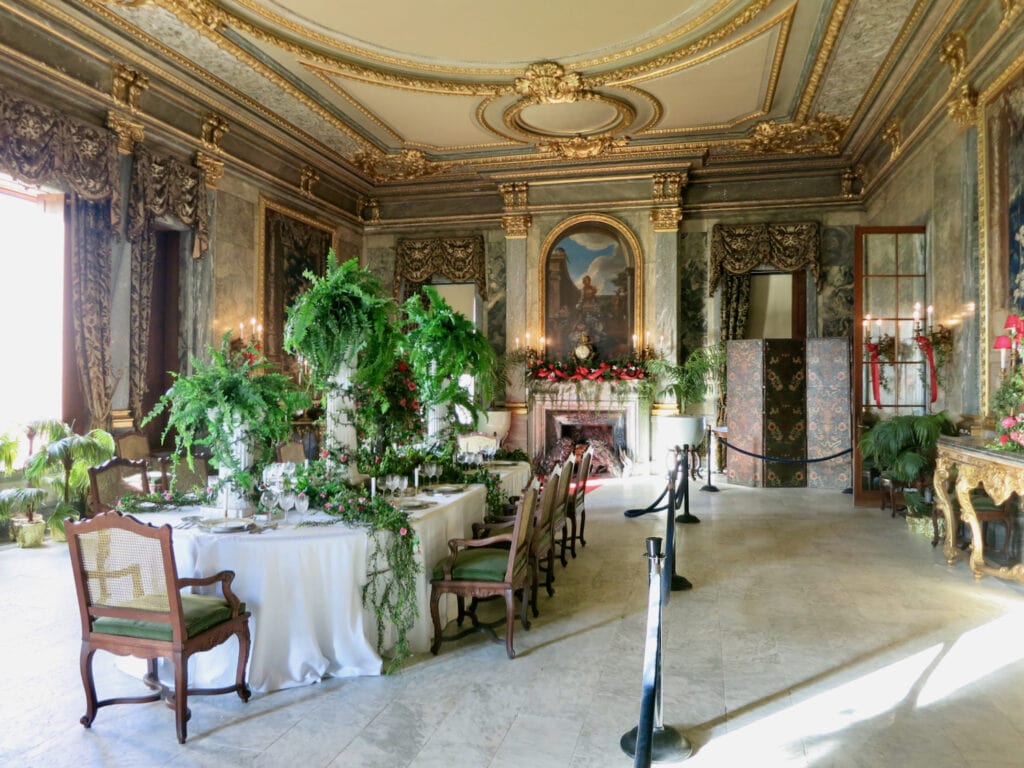
TOUR: Staatsburg Historic Site (Mills Mansion), Staatsburg
Like the Vanderbilt’s place down the road, Mills Mansion, known as Staatsburg Historic Site, owned by financier Ogden Mills and his wife, Ruth, was re-built in 1895 to showcase great wealth.
Ruth Livingston Mills grew up in a more modest version of this home. But, aspiring to be numero-uno Society Lady, she hired starchitects of the day, McKim, Mead and White, to expand the 25-room Hudson River home into its current 79 rooms.
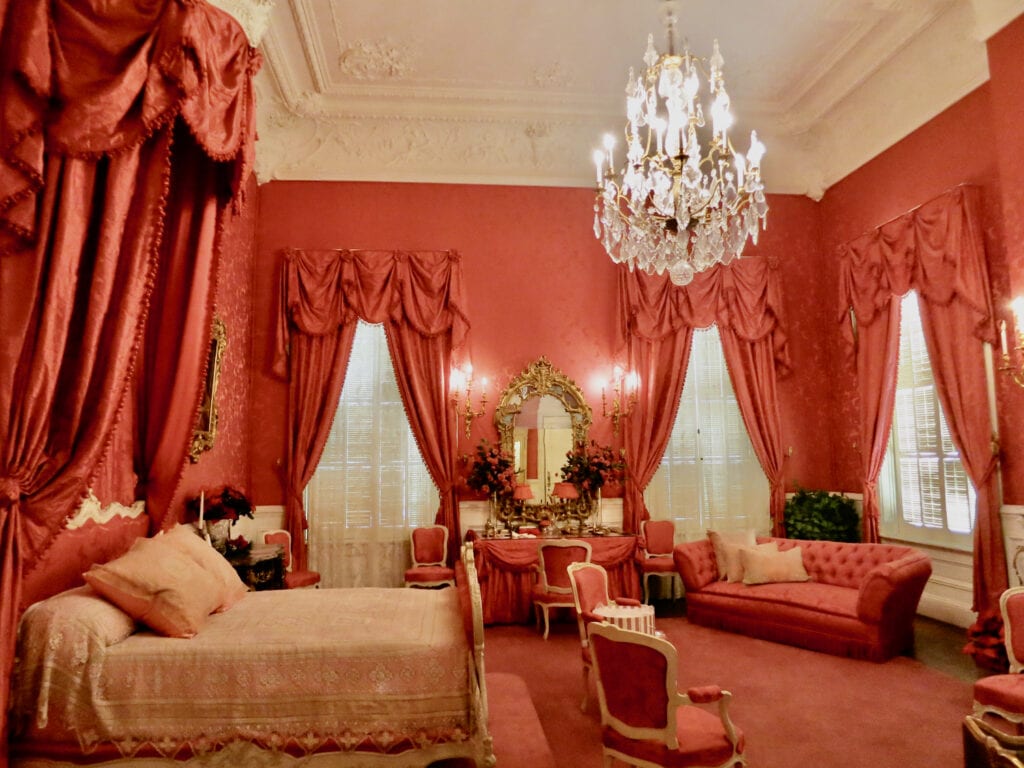
The Mill’s soaring 18 ft. royal bedrooms are draped in finery. Ruth’s was a fantasia in pink, with crystal chandeliers.
Enter through the front door, just as guests back in the day would be welcomed into the home if you were of proper social standing. Catch your breath as you take in the grand staircase, ceiling and walls cloaked in quarter-sawn oak.
Medieval tapestries hang on massive walls. The Hudson River glistens through back windows, and French doors open onto a vast terrace.
Ruth was fanatical about her lineage. Portraits of ancestors occupy prominent wall space for all visitors to see. One was her great grandfather, Francis Lewis, who signed the Declaration of Independence.
Edith Wharton visited Staatsburgh often, with her Aunt who lived nearby. Because of this, rumor has it that Wharton’s book, The House Of Mirth, is based on the Mills and their friends. Check this NY Parks event website for regular and themed tours and costs.
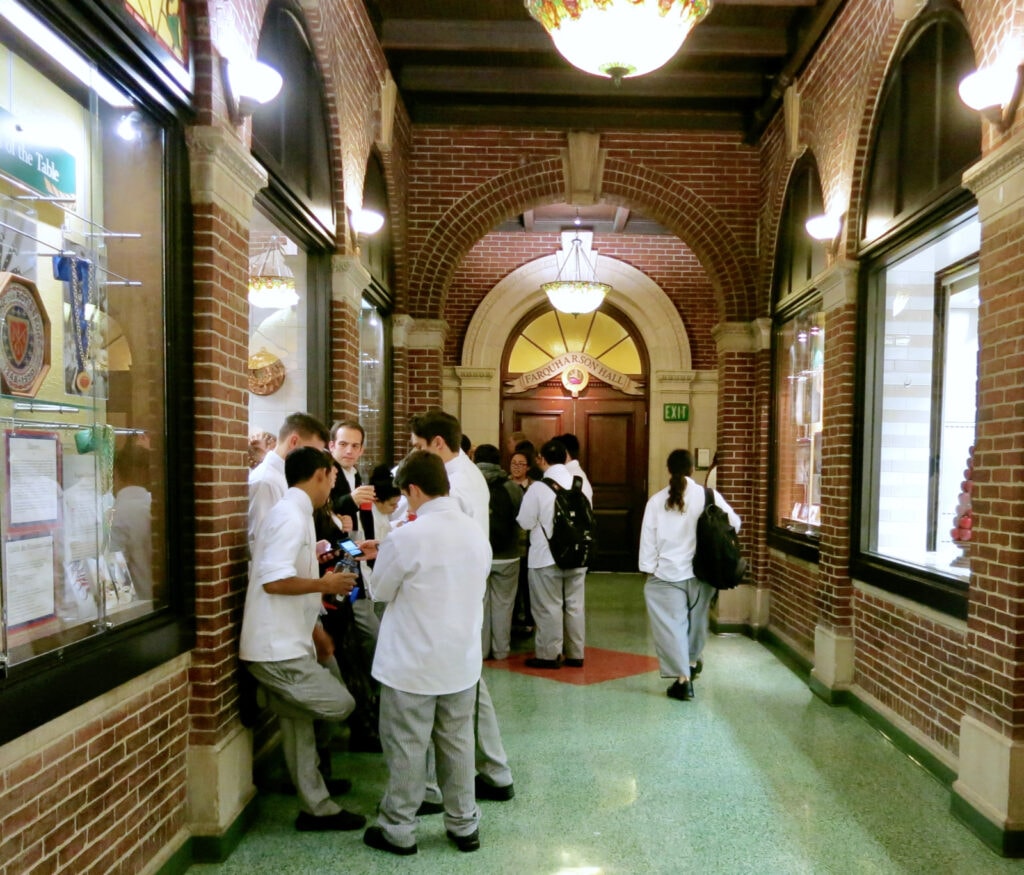
TOUR: Culinary Institute of America (CIA)
With an enrollment of 2,800, CIA Hyde Park is spawning grounds for some of the best chefs in the world. The CIA was founded in New Haven, CT in 1946. It moved to its current campus (taking over a Jesuit Seminary) in 1972.
Take a tour through the well-trod tiled halls. Peek into the “Wine Spectator” Classroom – the only place in New York State where students aged 18-21 can sip (then spit out) wine. And watch men and women mixing, chopping, and learning the elements of culinary arts in other windowed kitchens.
Students make meals for each other. You’ll most likely witness lines of white-frocked folks taking their trays to the former Jesuit Chapel, now the magnificent Farquharson Dining Hall. Consult website for tour times and tickets.
Things To Do in Poughkeepsie NY
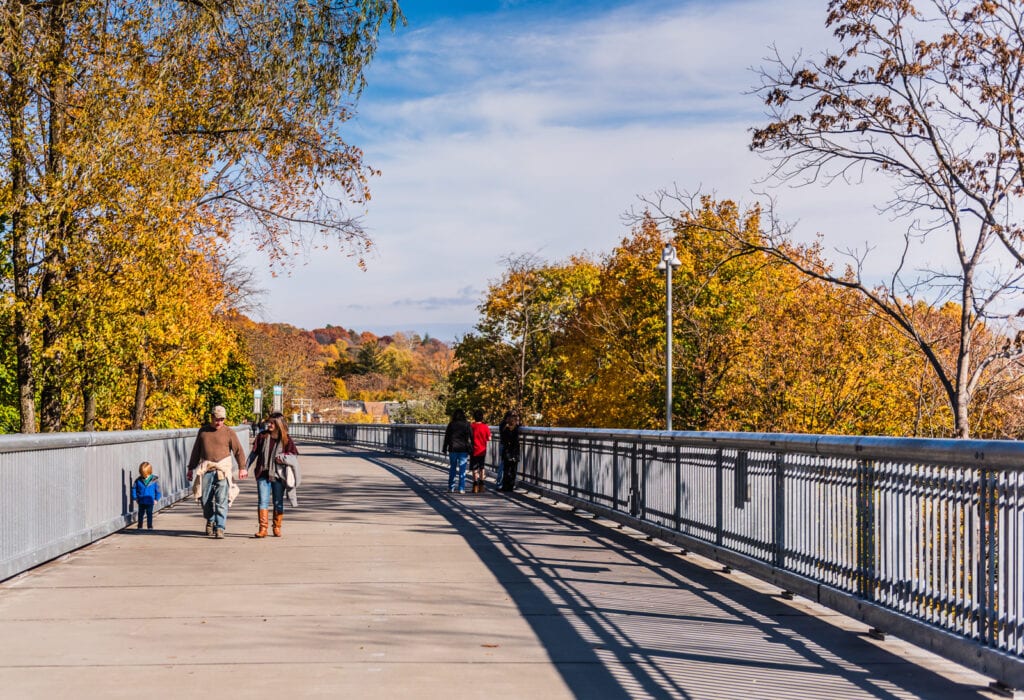
WALK: Walkway Over the Hudson, Highland to Poughkeepsie NY
The 1.28 mile Walkway Over the Hudson State Historic Park – the longest elevated pedestrian park in the world – was once the steel Poughkeepsie-Highland Railroad Bridge that from 1888 to 1974 saw the crossing of up to 3,500 freight cars a day.

What was once a dominant passage transporting western raw materials to eastern industrial centers fell into decline after a fire nearly destroyed the bridge in 1974. Transformed into a public park in Fall 2009, the bridge hovers 212 feet above the Hudson River and draws thousands of hikers, dog-walkers, new parents pushing strollers, and tourists each year.
EXPERIENCE: Bridge Music
For a VERY cool, unusual experience, plan to walk the complete 3.6 mile Loop Trail that takes you over the Mid-Hudson Bridge as well.
There, you’ll find “listening stations” for the amazing and unusual Bridge Music, created by symphony composer, Joseph Bertolozzi. This creative musician used mallets and hammers on various parts of the bridge, assigned “notes” to each sound, and then arranged incredibly mesmerizing percussive movements.
This experimental music was so positively received, Bertolozzi was asked to repeat this project at the Eiffel Tower!
VISIT: Locust Grove Estate, Poughkeepsie
The “Father of Modern Telecommunication,” Samuel Morse, hit it big with the telegraph and his “Morse Code,” (patented in 1840). Feeling flush, he purchased this Ornamental Federal-Style home in 1847, then remodeled it as an Italianate Villa he dubbed Locust Grove.
Morse died in 1872. In 1895, Wilbur Young, a prosperous NYC lawyer, purchased the home, adding a large dining room but keeping much of the home and some artifacts intact. These included photos by Mathew Brady, a student of Samuel Morse when Morse was a Professor of Art at NYU.
Tibetan bells in the Central Hall once called the Youngs in for dinner. The immaculate butler’s pantry had one unique feature – a mirror tilted in order to see Mrs. Young nod for service over a room divider.
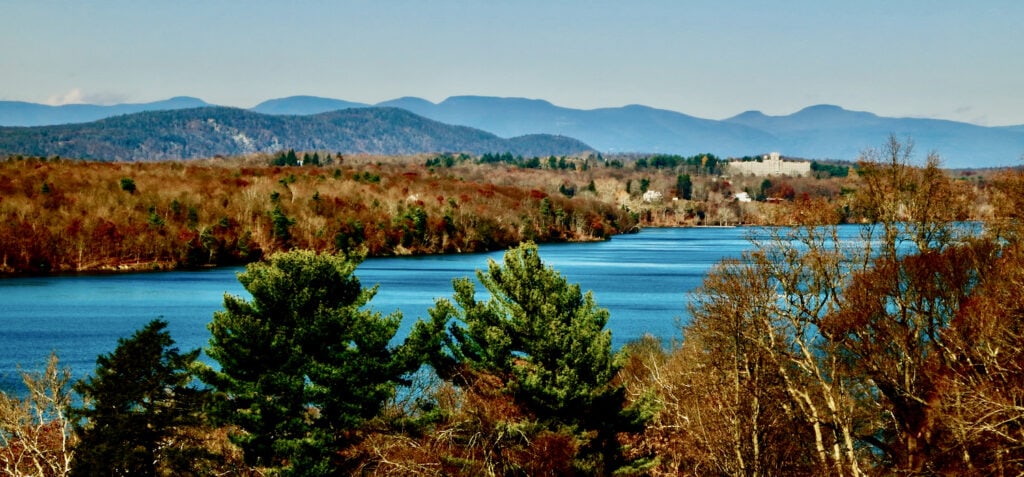
On 180 acres with 5 miles of trails along the Hudson River, Locust Grove is worth visiting, even if you don’t take a tour of the home itself.
VISIT: Frances Lehman Loeb Art Center/Vassar College
Head through the Main arched gate of Vassar College. Look right immediately to find the contemporary glass entrance of the Frances Lehman Loeb Art Center.
Small but compelling, share staring space with engaged students in galleries displaying ancient to modern treasures.
Discover Thai, Chinese, Tibetan, 1st Century Roman, Greek, the head of an Egyptian viceroy from a sarcophagus cover, religious, A Bellini triptych from 1440, Christ, Madonna, Picasso, Matisse, O’Keefe, Munch, Bacon, Ernst, Moore, Calder, Lichtenstein, Stella and more.
It’s the Met, brought down to bite size. And totally worth a visit. Free admission.
Restaurants in Hyde Park and Poughkeepsie NY
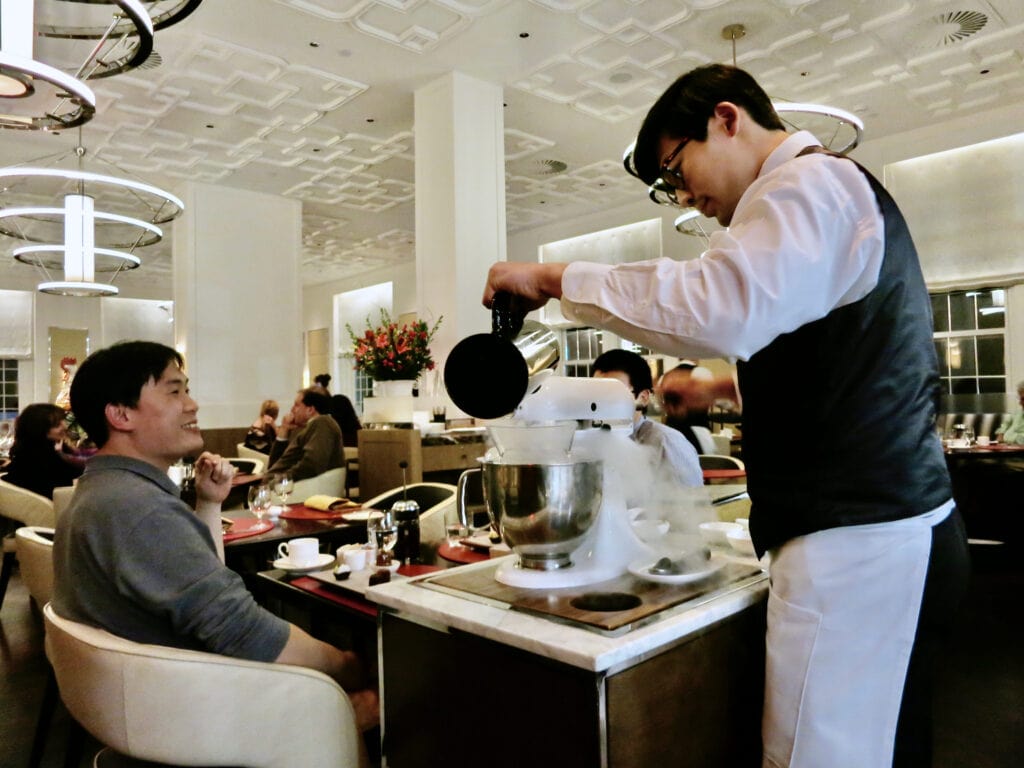
EAT: Culinary Institute of America (CIA), Hyde Park
This college for the cooking elite pampers those lucky enough to score a table at one of the four training restaurants: American Bounty and The Bocuse Restaurant (both high end), Apple Pie Bakery Café, and Caterina de’ Medici (more casual).
Though the chefs and staff are students, meals merit favorable comparison to many multi-starred restaurants. The contemporary Bocuse made a splash when it replaced the fussier Escoffier Room.
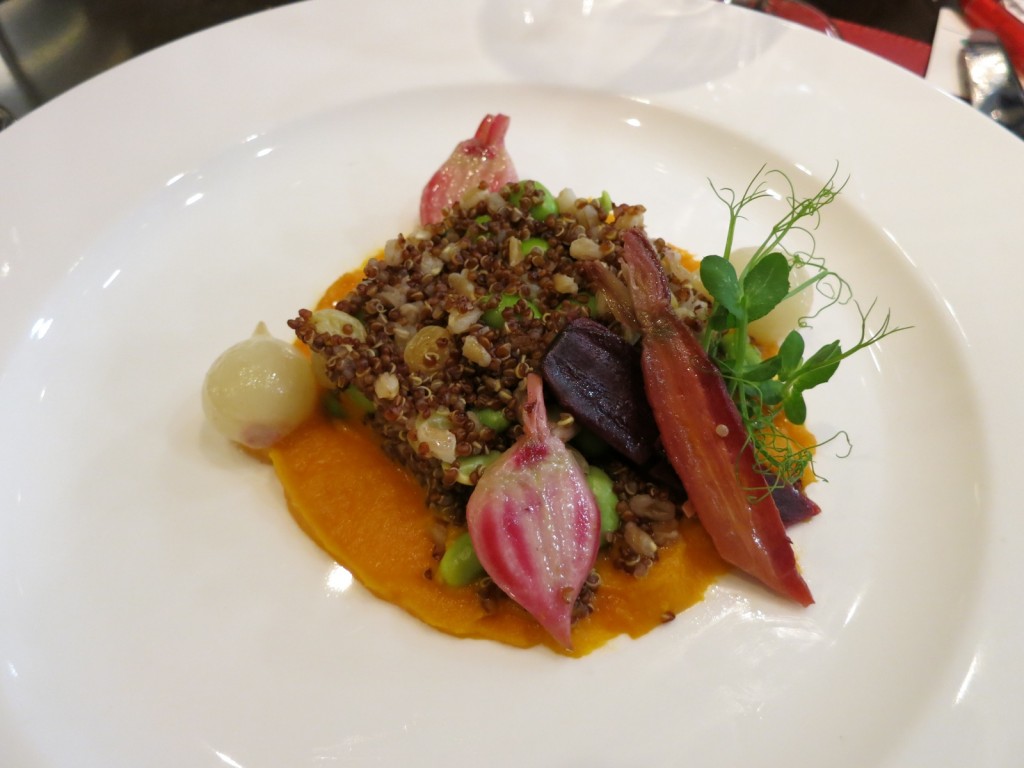
Bocuse
The restaurant is named for French Celeb chef, Paul Bocuse, who sent his son to CIA rather than Cordon Blu back home. In a stylishly cool palette of grays and off whites, Bocuse impresses even jaded NYC foodies.
Opt for the Black Truffle Soup – a Paul Bocuse signature that dates back to the 70’s. A piquant beef broth, infused with earthy truffle and topped with a dome of golden puff pastry, it is a perennial favorite.
Or try pan seared fish, steak, or a piquant vegan dish: each brought to the table with flair.
Try to score a coveted seat by the kitchen window to watch students lined up for orders. What’s more thrilling? The excellent food or the knowledge that these waiters and chefs will be off to the finest restaurants (or starting their own) within three weeks?
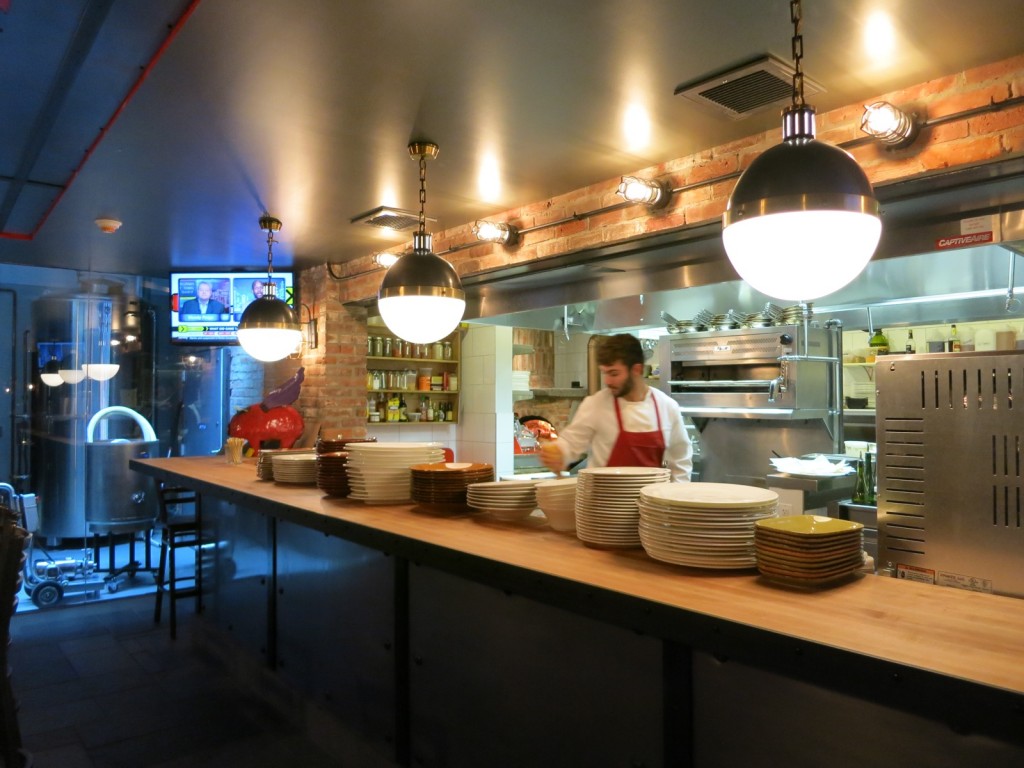
EAT: Mill House Brewing Company, Poughkeepsie
Owned by brothers Chris and CIA-trained Daniel Crocco, with emphasis on beer and beer-infused everything, Mill House Brewing Co. uses local ingredients, including hops grown in the brewer’s local garden.
Try a pull from the “randall” – a gizmo filled with fresh hops – for some of the cleanest, lip-smacking beer to ever slide down your gullet. Then gobble up home-smoked, homemade sausage, Drunken Shrimp & Grits, Bang Bang Cauliflower, Nashville Hot Chicken, artisanal pizzas and so much more.
Hotels in Hyde Park and Poughkeepsie NY
STAY: Most local hotels are chains or variations of same. If you’re a fan of larger hotels, stay at the newly refreshed Poughkeepsie Grand Hotel, which has some great views of the Hudson River, or check the map below for best prices on franchise hotels.
In Hyde Park, go small and intimate at the 7 room Journey Inn B&B, with beautiful rooms right across from the Vanderbilt Estate.
All articles belong to Getaway Mavens LLC, and all photos belong to us as well, unless otherwise noted. It’s all copyrighted. Please don’t repost anything elsewhere without asking us first. All rights reserved. This site uses cookies to enhance your experience.
We make no guarantees of any price listed on our site. We’re not responsible for content on external websites linked to ours, including linked resources, an external blog post, any partner site, hotel property sites, or affiliate sites. We only write about places we have vetted, but can’t guarantee that your experience will be exactly the same.
Posts may contain affiliate links at no cost to you. Several of our trips are also compensated by the respective tourism boards for the city or state we are visiting. This never impacts how we share the destination with you – opinions are always our own and we pride ourselves on that. We do not sell links or accept unsolicited guest posts under any circumstances. Don’t even ask.
United States Copyright, Getaway Mavens, LLC

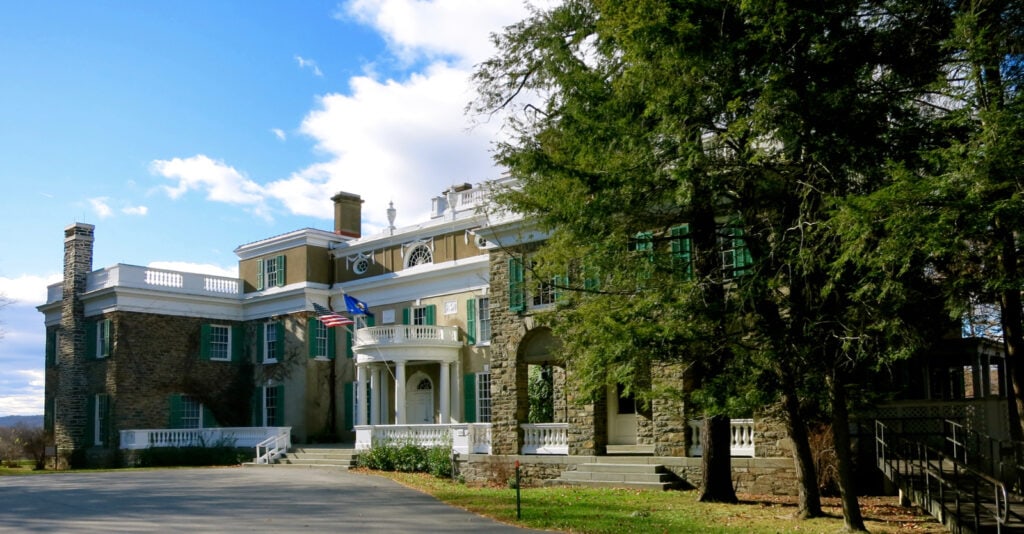
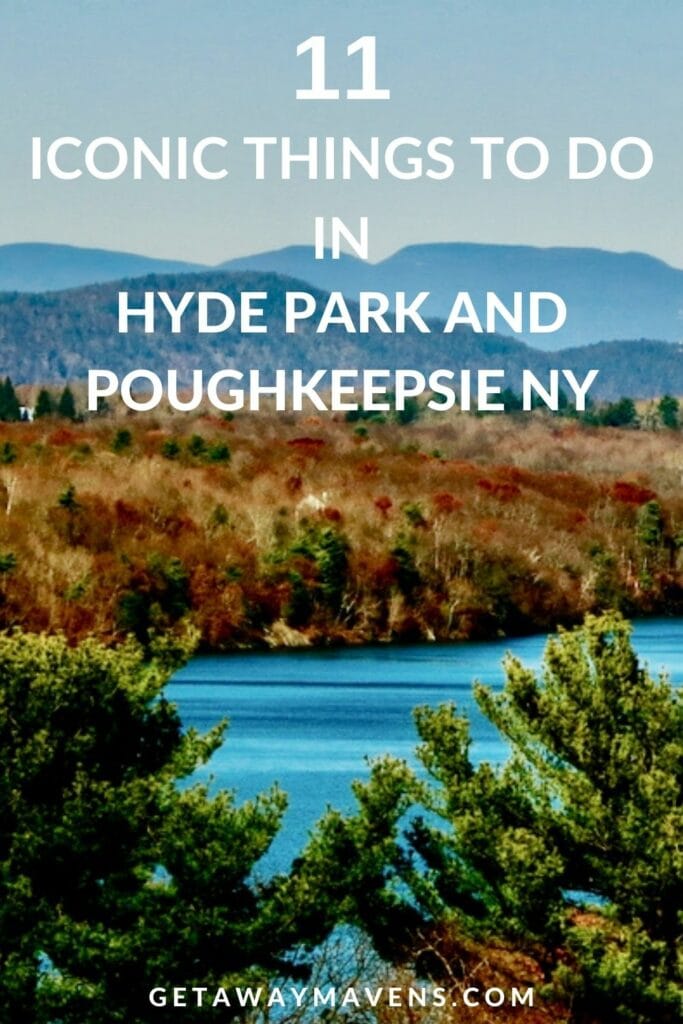
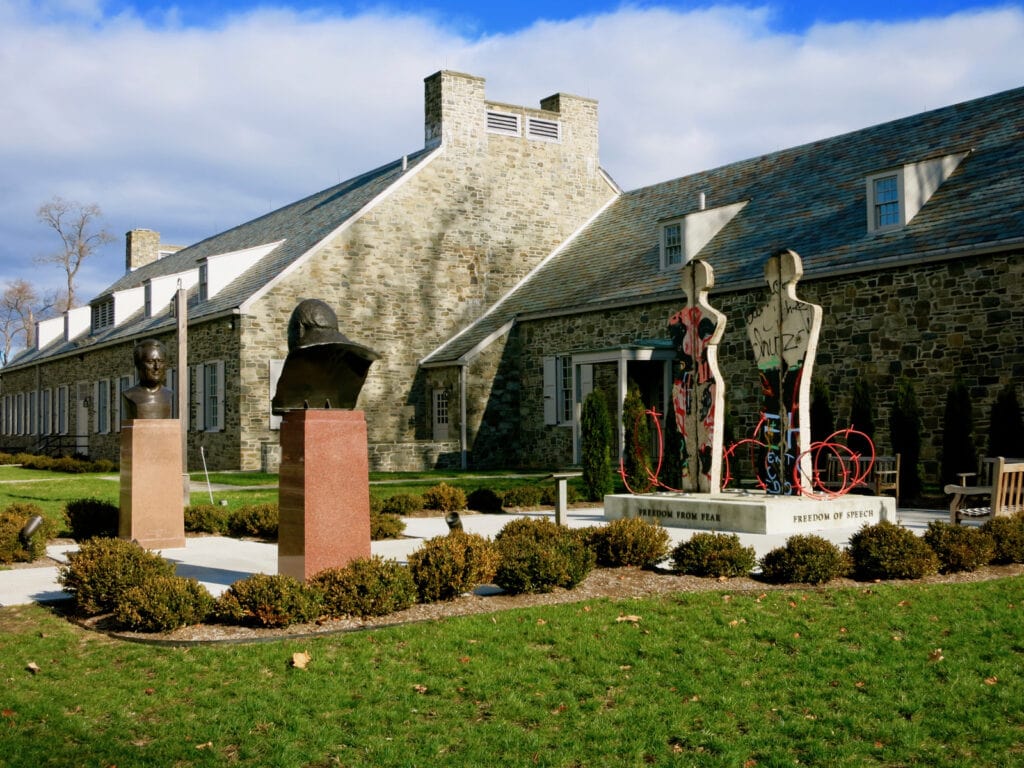
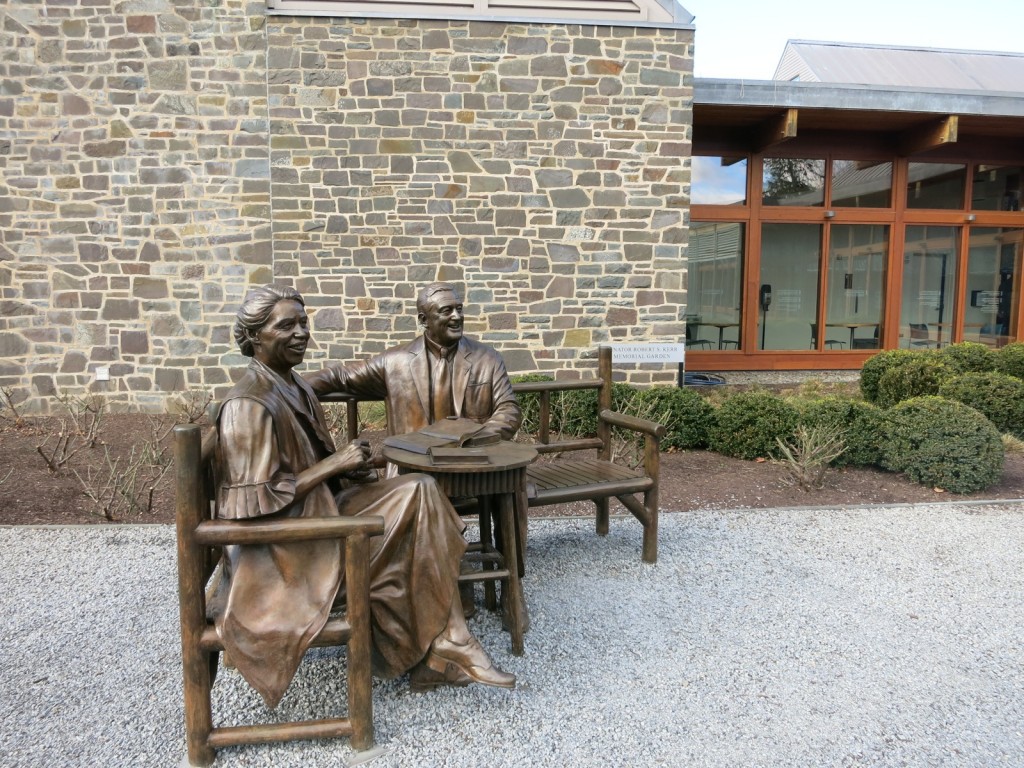
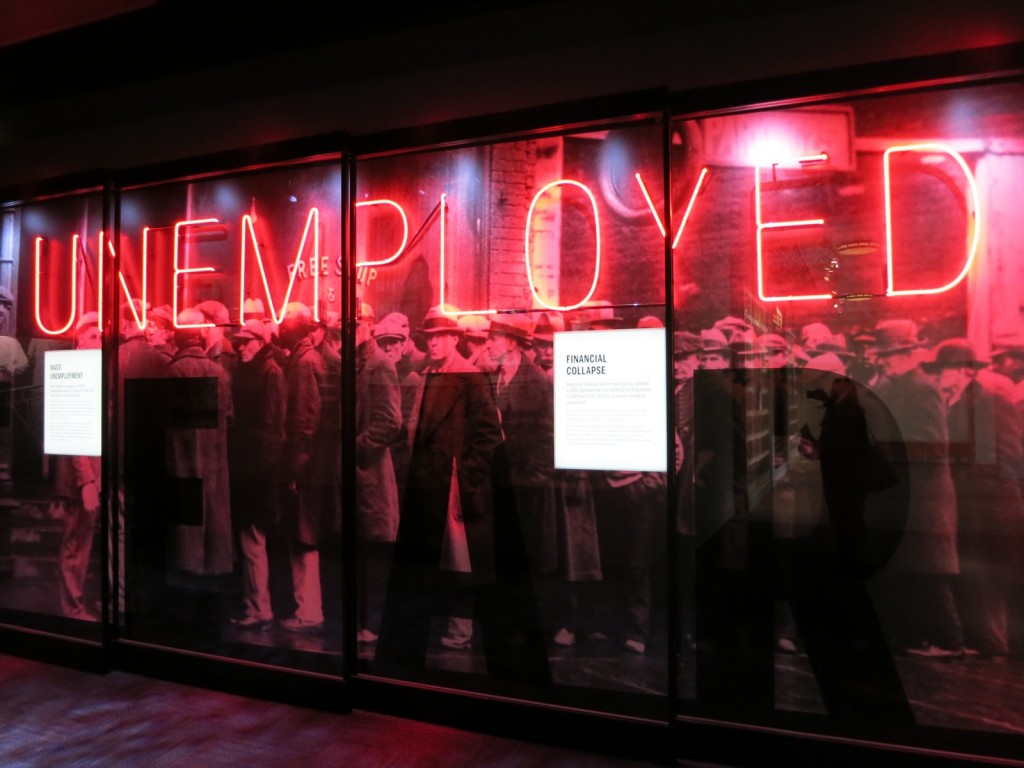
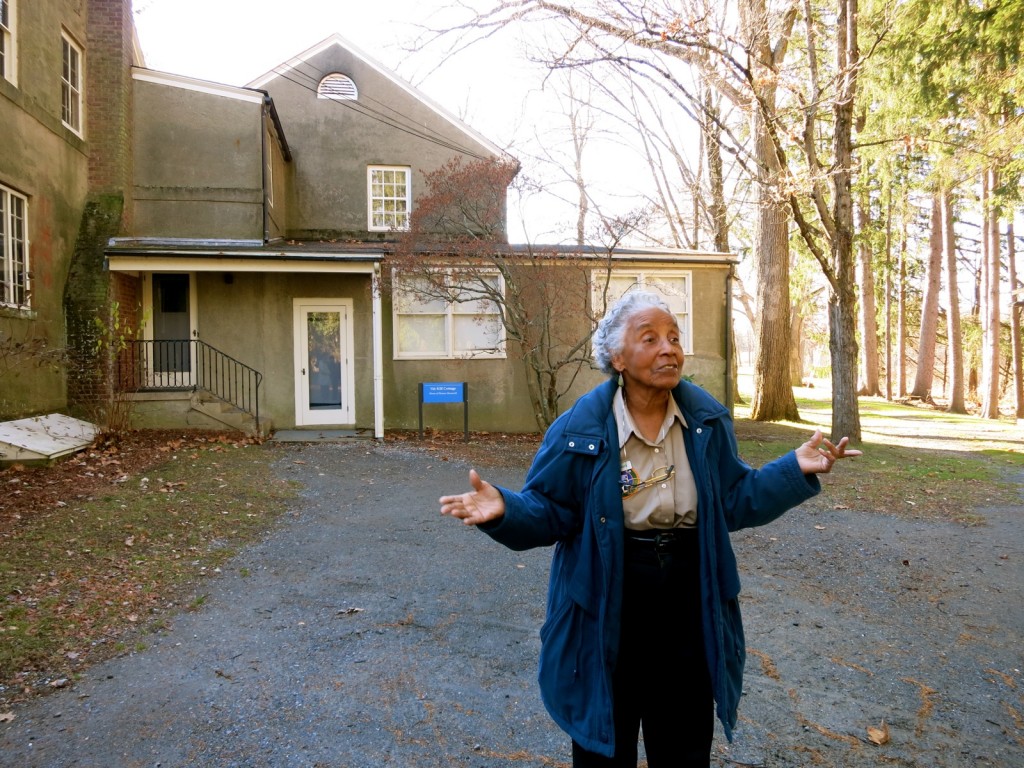
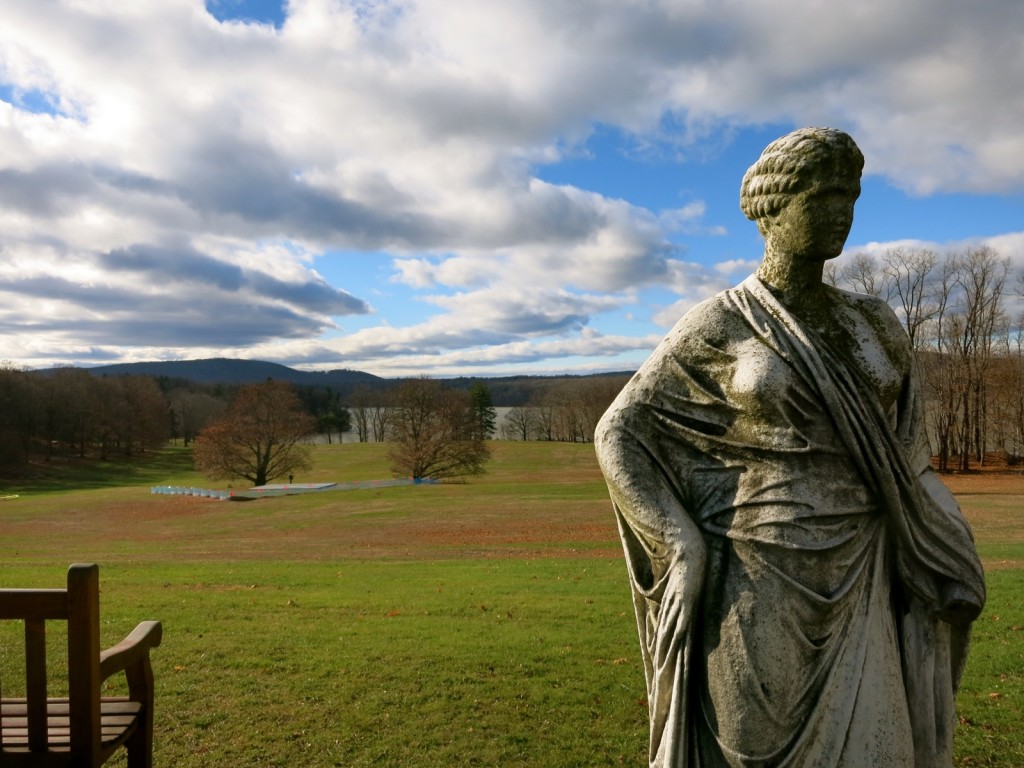
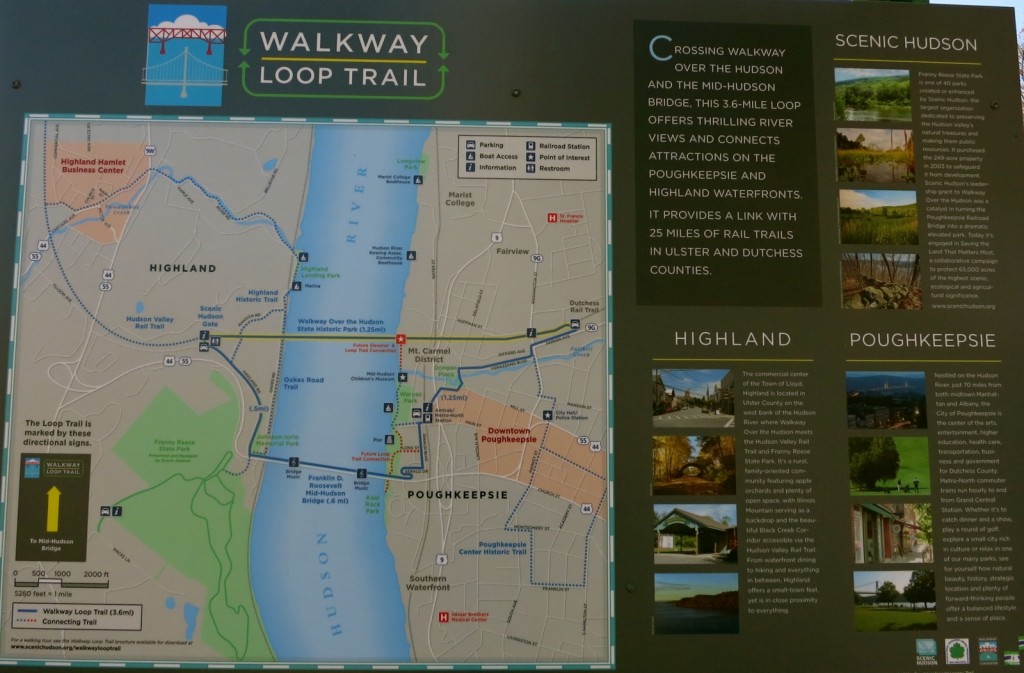
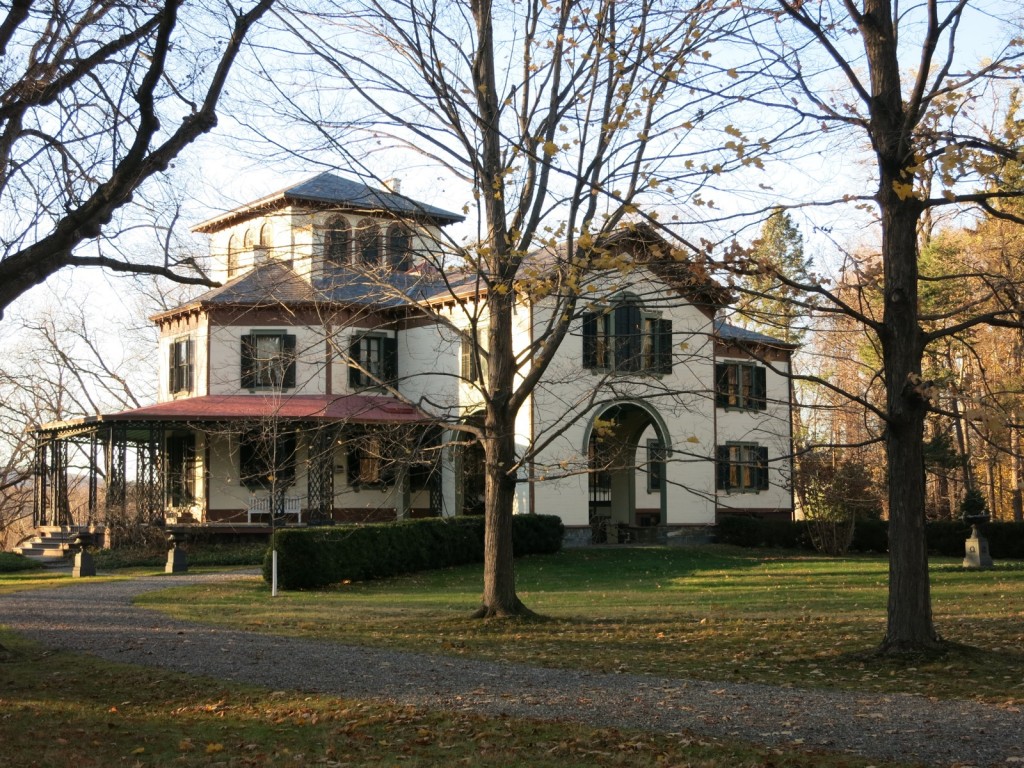
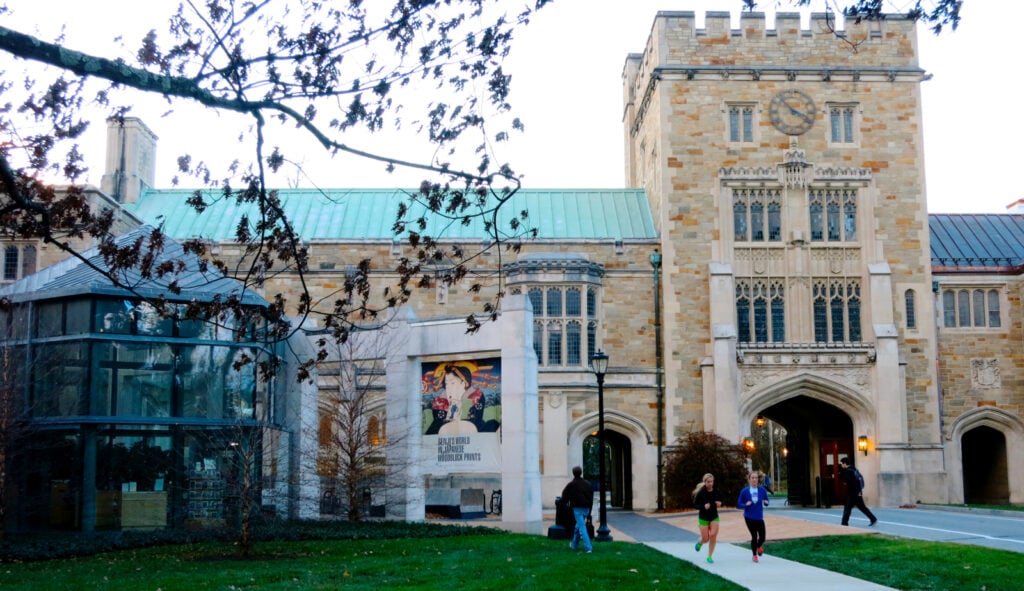
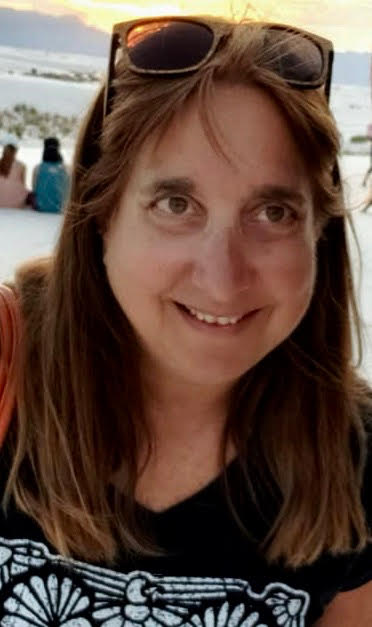
That Doris Mack is something else! I included a video of her on this post: http://albanykid.com/2013/05/10/hyde-park-ny/
Wow.
This is so well written and so well researched!
Im so impressed.
I wish your site wasn’t cluttered with sooooo many annoying ads though. Makes everyone hard to read and makes your site look cheap.